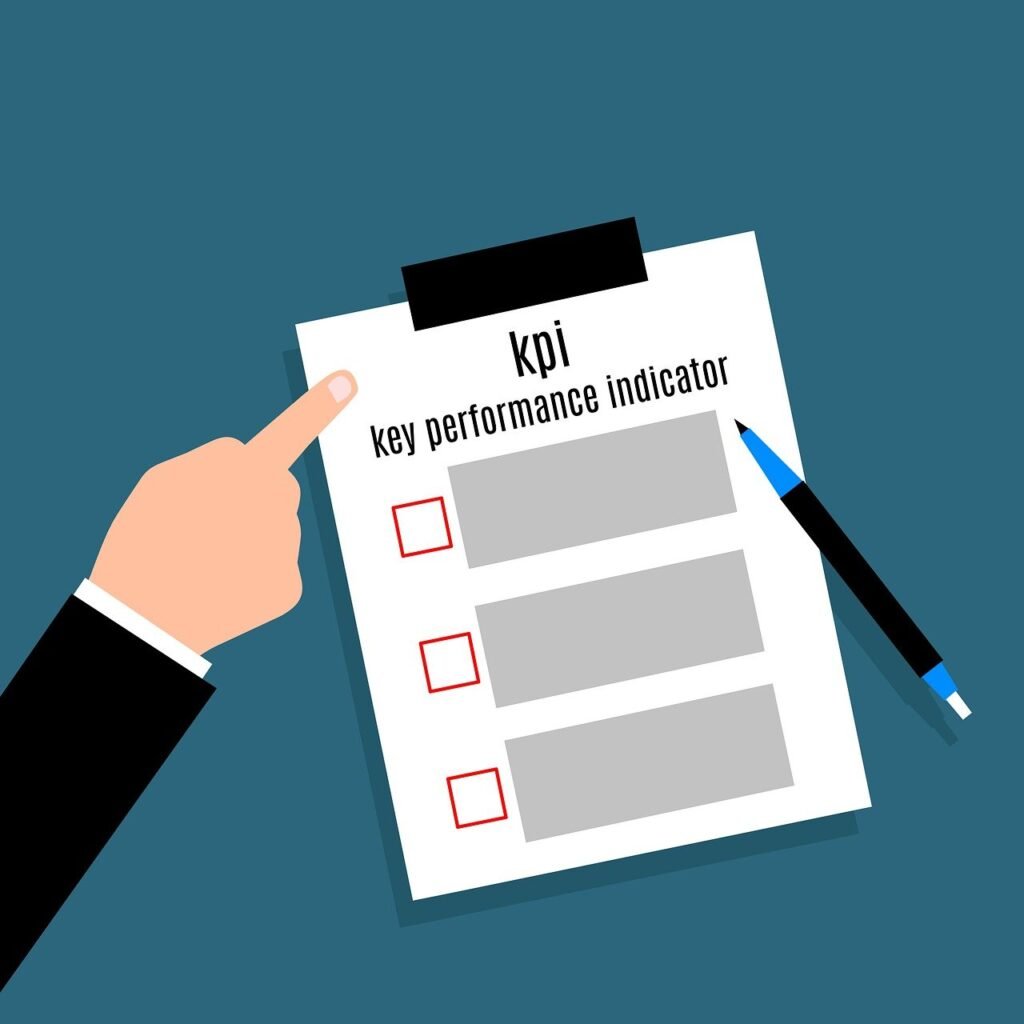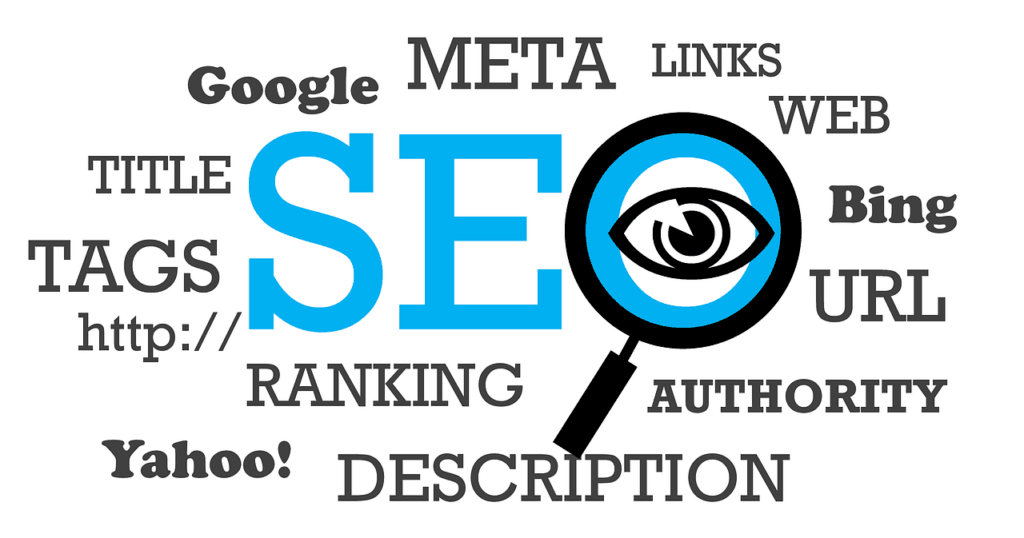This Article has been revised, edited and added to, by Poulomi Chakraborty.
In the clamorous world of digital marketing, where every startup is vying for attention, content remains king. However, not all content is created equal. Amidst the pursuit of engagement and visibility lies the often underutilized strategy of content gap analysis. For startups, navigating the crowded digital landscape can be challenging, but by employing a thorough content gap analysis, the pathway to visibility becomes considerably less daunting.
Content gap analysis is the art and science of identifying and filling the voids in your content strategy. It’s about unveiling opportunities hidden in plain sight, and harnessing them to not only drive traffic but to cultivate engagement and conversions. In this article, we will unfurl the meticulous process of conducting a content gap analysis to uncover keyword opportunities, thereby anchoring your startup in a position of visibility and authority in the digital space.
Understanding Content Gap Analysis

In the competitive landscape of digital marketing, startups often find themselves grappling with the challenge of establishing a strong online presence amidst industry giants and established players. However, leveraging content gap analysis can provide startups with a strategic edge by uncovering valuable keyword opportunities and positioning their brand effectively in the digital sphere.
Identifying Your Competitors
Before delving into content gap analysis, it’s crucial for startups to identify their competitors accurately. While direct competitors are those offering similar products or services, indirect competitors may target the same audience through different means. Utilizing tools like SEMrush, Ahrefs, or Moz can help in compiling a comprehensive list of competitors and understanding their content strategies.
Analyzing Competitors’ Content
Once competitors are identified, the next step is to analyze their content thoroughly. This involves assessing not only the type of content they produce but also its quality, relevance, and engagement metrics. Pay close attention to the topics they cover, the keywords they target, and the format of their content. Tools like BuzzSumo can provide insights into the most shared content in your industry, offering valuable cues for content ideation.
Mapping Keywords to Content
Keyword mapping is a critical aspect of content gap analysis, as it helps in aligning the startup’s content strategy with the search intent of its target audience. Begin by compiling a list of relevant keywords and categorizing them based on their search volume, competition level, and relevance to your business. Tools like Google Keyword Planner or Keywords Everywhere can aid in this process by providing valuable keyword data.
Identifying Content Opportunities
Content gap analysis revolves around identifying areas where your competitors have a strong presence while your startup is lacking. By comparing your keyword strategy with that of your competitors, you can pinpoint gaps in your content coverage and unearth valuable opportunities for creating targeted, high-performing content. Look for keywords with high search volume and low competition where your startup can establish authority and attract organic traffic.
Content Ideation and Creation
Armed with insights from content gap analysis, startups can embark on the process of content ideation and creation with a clear strategic direction. Focus on developing content that fills the identified gaps in your industry while aligning with your brand messaging and value proposition. Experiment with different content formats such as blog posts, videos, infographics, or podcasts to cater to diverse audience preferences.
Monitoring and Iteration
Content gap analysis is not a one-time activity but an ongoing process that requires continuous monitoring and iteration. Keep track of changes in the competitive landscape, shifts in search trends, and evolving consumer preferences to adapt your content strategy accordingly. Regularly revisit your keyword research and content mapping to identify new opportunities and refine your approach for maximum effectiveness.
In the dynamic realm of digital marketing, content gap analysis emerges as a potent tool for startups to carve out their niche, outmaneuver competitors, and drive sustainable growth.
By gaining a deep understanding of their competitors’ content strategies, mapping keywords to content, and leveraging insights to inform content ideation and creation, startups can position themselves strategically in the digital landscape and unlock new avenues for engagement and conversion.
Embrace content gap analysis as a cornerstone of your digital marketing strategy and watch your startup thrive amidst the competition.
Methodologies for Identifying Content Gaps

In the quest for digital visibility and market share, startups often face the daunting task of standing out amidst a sea of competitors. Content gap analysis serves as a strategic compass, guiding startups towards untapped keyword opportunities and unexplored content territories. However, to harness the full potential of content gap analysis, startups must employ methodologies that are both systematic and innovative.
Competitor Content Audit
The foundation of content gap analysis lies in understanding the content landscape of your competitors. Conducting a comprehensive content audit of your competitors’ digital assets can unveil valuable insights into their content strategy, including the topics they cover, the keywords they target, and the engagement levels they achieve. Tools like SEMrush, Ahrefs, or Moz can facilitate this process by providing in-depth competitor analysis reports.
Keyword Research and Analysis
Keyword research forms the cornerstone of content gap analysis, offering startups a roadmap to navigate the ever-evolving terrain of search engine optimization (SEO). Begin by compiling a list of relevant keywords related to your industry, products, or services. Utilize keyword research tools like Google Keyword Planner, SEMrush, or Ubersuggest to identify high-volume keywords with moderate to low competition. Pay close attention to long-tail keywords, as they often present lucrative opportunities with less competition.
Content Topic Mapping
Mapping keywords to content topics is essential for ensuring alignment between search intent and content strategy. Once you have identified relevant keywords, categorize them based on overarching themes or topics. Consider the buyer’s journey and segment keywords into awareness, consideration, and decision-stage topics to cater to different stages of the customer lifecycle. This holistic approach ensures that your content addresses the diverse needs and pain points of your target audience.
Content Performance Analysis
Analyzing the performance of your existing content provides valuable insights into areas of strength and weakness, as well as potential content gaps. Evaluate key metrics such as traffic, engagement, bounce rate, and conversion rate to identify top-performing content assets as well as underperforming areas. Tools like Google Analytics or social media analytics platforms offer robust analytics capabilities to track and measure the impact of your content efforts.
Social Listening and Trend Analysis
In today’s hyperconnected world, social media platforms serve as invaluable sources of real-time insights and consumer sentiment. Leverage social listening tools like Hootsuite, Brandwatch, or Mention to monitor conversations, trends, and mentions related to your industry or brand. Identify emerging topics, pain points, or opportunities that can inform your content strategy and address the evolving needs of your target audience.
Customer Feedback and Surveys
Direct feedback from your target audience is gold dust for identifying content gaps and refining your content strategy. Conduct surveys, interviews, or focus groups to gather qualitative insights into the topics, questions, and challenges that matter most to your customers.
Pay attention to recurring themes, pain points, or areas of confusion that signal opportunities for creating relevant and valuable content. Incorporate feedback loops into your content development process to ensure continuous improvement and relevance.
Industry Trends and Insights
Staying abreast of industry trends and insights is essential for anticipating shifts in consumer behavior and staying ahead of the competition. Subscribe to industry publications, attend conferences, and participate in online forums or communities to stay informed about the latest developments in your field.
Identify emerging trends, technologies, or challenges that present opportunities for creating timely and relevant content that resonates with your target audience.
Content gap analysis is not a one-size-fits-all approach but rather a dynamic and iterative process that requires a combination of strategic methodologies and creative thinking.
By conducting a thorough competitor content audit, leveraging keyword research and analysis, mapping keywords to content topics, analyzing content performance, listening to social conversations, gathering customer feedback, and staying abreast of industry trends, startups can identify and exploit untapped keyword opportunities to gain a competitive edge in the digital landscape.
Embrace these methodologies as part of your content strategy toolkit and embark on a journey of continuous improvement and innovation to position your startup for sustained success.
Implementing Content Gap Strategies

As startups navigate the competitive landscape of digital marketing, implementing content gap strategies becomes essential for establishing a strong online presence and gaining a competitive edge. While identifying content gaps is the first step, executing strategic initiatives to fill those gaps is where startups can truly differentiate themselves and drive meaningful results.
Content Calendar Planning
A well-defined content calendar serves as the blueprint for executing content gap strategies effectively. Start by aligning your content themes and topics with the keywords and content gaps identified through thorough analysis.
Break down your content calendar into monthly or quarterly segments, ensuring a balanced mix of evergreen content, topical pieces, and promotional campaigns. Incorporate flexibility to capitalize on emerging trends or timely opportunities while maintaining consistency in your content delivery.
Diversified Content Formats
Diversifying content formats is key to engaging diverse audience segments and maximizing reach and impact. Experiment with different content formats such as blog posts, videos, infographics, podcasts, webinars, and interactive tools to cater to varying preferences and consumption habits.
Tailor your content formats to the nature of the content gap and the preferences of your target audience. For instance, complex topics may be better suited for in-depth blog posts or webinars, while visual content like infographics or videos can simplify concepts and enhance engagement.
SEO Optimization
Optimizing content for search engines is critical for ensuring visibility and driving organic traffic to your website. Leverage the keywords identified through content gap analysis to optimize your content titles, headings, meta descriptions, and body copy.
Incorporate long-tail keywords naturally into your content to capture specific search queries and address niche topics. Focus on providing valuable, relevant content that aligns with user intent and solves their problems, rather than keyword stuffing or over-optimization.
Content Promotion and Distribution
Creating great content is only half the battle; effectively promoting and distributing it is equally important for maximizing its impact. Develop a comprehensive promotion strategy that leverages owned, earned, and paid channels to amplify your content reach.
Utilize social media platforms, email newsletters, influencer partnerships, and content syndication networks to distribute your content to relevant audiences. Monitor engagement metrics and adjust your promotion tactics based on performance to optimize your content distribution efforts continuously.
Audience Engagement and Community Building
Engaging with your audience and building a sense of community around your brand is crucial for fostering loyalty and driving brand advocacy. Encourage active participation through comments, discussions, and user-generated content initiatives.
Respond promptly to feedback, questions, and inquiries to demonstrate responsiveness and build trust with your audience. Invest in building relationships with influencers, thought leaders, and industry experts to expand your reach and credibility within your niche.
Performance Monitoring and Optimization
Regularly monitoring the performance of your content gap strategies is essential for gauging effectiveness and identifying areas for improvement. Track key performance indicators (KPIs) such as website traffic, engagement metrics, conversion rates, and keyword rankings to measure the impact of your content efforts.
Leverage analytics tools like Google Analytics, SEMrush, or Moz to gain insights into audience behavior and content performance. Use data-driven insights to refine your content strategy, optimize underperforming assets, and capitalize on emerging opportunities.
Implementing content gap strategies requires a strategic blend of planning, creativity, and execution to drive meaningful results for startups. By developing a robust content calendar, diversifying content formats, optimizing for SEO, prioritizing content promotion and distribution, fostering audience engagement, and continuously monitoring and optimizing performance, startups can effectively bridge content gaps, enhance brand visibility, and attract and retain their target audience.
Embrace these strategies as pillars of your content marketing approach and embark on a journey of sustainable growth and success in the digital landscape.

Related: Check out our free SEO suite

Measuring the Impact
In the realm of digital marketing, measurement is the cornerstone of success. Measuring the impact of content gap analysis initiatives enables startups to gauge the effectiveness of their strategies, identify areas for improvement, and refine their approach for optimal results.
Defining Key Performance Indicators (KPIs)
Before delving into measurement, startups must first define clear and relevant key performance indicators (KPIs) aligned with their business objectives. These KPIs may vary depending on the specific goals of the content gap analysis initiatives but commonly include metrics such as website traffic, engagement rates, conversion rates, keyword rankings, and social media interactions. By establishing clear KPIs, startups can track progress and measure success against predefined benchmarks.
Website Traffic and User Engagement
Website traffic serves as a fundamental indicator of the effectiveness of content gap strategies in driving audience interest and engagement. Analyze metrics such as total visits, unique visitors, page views, and session duration to assess the impact of your content on attracting and retaining visitors. Look for trends and patterns in traffic over time, correlating spikes or dips with content releases, promotional campaigns, or external factors.
Additionally, monitor user engagement metrics like bounce rate, pages per session, and average time on page to evaluate the quality of the user experience and the relevance of your content to visitor needs.
Conversion Rates and Goal Completions
Ultimately, the success of content gap analysis initiatives hinges on their ability to drive conversions and achieve business objectives. Track conversion rates across various conversion points, such as form submissions, email sign-ups, product purchases, or demo requests, to measure the effectiveness of your content in driving desired actions.
Utilize goal tracking features in analytics platforms to attribute conversions to specific content assets and campaigns, enabling granular analysis of performance. Identify high-converting content pieces and replicate their success in future initiatives, while optimizing underperforming assets to improve conversion rates.
Keyword Rankings and Organic Visibility
One of the primary goals of content gap analysis is to improve organic visibility and keyword rankings for targeted search terms. Monitor changes in keyword rankings over time, focusing on both primary and secondary keywords identified through gap analysis.
Track movement in search engine results pages (SERPs) for key terms, assessing improvements or declines in visibility relative to competitors. Use SEO tools like SEMrush, Ahrefs, or Moz to track keyword rankings, identify opportunities for optimization, and monitor the impact of content updates on search performance.
Additionally, analyze organic search traffic metrics to understand the correlation between keyword rankings and website traffic.
Social Media Metrics and Brand Sentiment
Social media platforms play a pivotal role in amplifying content reach, fostering audience engagement, and shaping brand perception. Monitor social media metrics such as follower growth, engagement rates, shares, likes, comments, and mentions to evaluate the impact of content gap strategies on social media performance.
Assess sentiment analysis to gauge audience reactions and sentiment towards your brand and content. Identify content pieces that resonate with your audience and drive meaningful interactions, leveraging insights to inform future content development and social media initiatives.
Return on Investment (ROI) Analysis

Measuring the return on investment (ROI) of content gap analysis initiatives is essential for demonstrating the value of content marketing efforts and guiding resource allocation decisions.
Calculate ROI by comparing the cost of content creation and promotion against the monetary value of resulting conversions or other predefined business outcomes. Analyze the cost per acquisition (CPA) and customer lifetime value (CLV) to assess the efficiency and effectiveness of your content marketing efforts in driving revenue and business growth. Use ROI analysis to prioritize high-impact initiatives, optimize budget allocation, and justify investment in content marketing to stakeholders.
Measuring the impact of content gap analysis initiatives is essential for startups to assess the effectiveness of their content marketing strategies, optimize performance, and drive sustainable growth.
By defining clear KPIs aligned with business objectives, tracking website traffic, user engagement, conversion rates, keyword rankings, social media metrics, brand sentiment, and ROI, startups can gain actionable insights into the effectiveness of their content gap strategies and make data-driven decisions to enhance their digital marketing efforts.
Embrace measurement as a continuous process of learning and improvement, leveraging insights to refine content strategies and drive meaningful results in the dynamic landscape of digital marketing.
Future Trends in Content Gap Analysis
As the digital landscape continues to evolve at a rapid pace, content gap analysis is poised to undergo transformative changes, driven by advancements in technology, shifts in consumer behavior, and emerging trends in digital marketing. By staying ahead of the curve and anticipating future trends, startups can position themselves strategically to leverage content gap analysis as a powerful tool for sustainable growth and competitive advantage.
AI-Powered Insights and Automation
Artificial intelligence (AI) and machine learning technologies are revolutionizing the field of content marketing, offering startups unprecedented insights and automation capabilities.
AI-powered content gap analysis tools can analyze vast amounts of data from diverse sources, including competitor content, search trends, and consumer behavior, to identify hidden opportunities and predict future content trends.
By harnessing AI-driven automation, startups can streamline content research, ideation, and optimization processes, enabling more agile and data-driven decision-making.
Predictive Analytics and Forecasting
The future of content gap analysis lies in predictive analytics and forecasting, enabling startups to anticipate shifts in consumer demand, emerging topics, and competitive threats proactively.
Predictive modeling techniques leverage historical data and machine learning algorithms to forecast future trends, allowing startups to adapt their content strategies preemptively and capitalize on emerging opportunities.
By leveraging predictive analytics, startups can stay ahead of the curve, minimize risks, and maintain a competitive edge in the dynamic digital landscape.
Semantic Search and Natural Language Processing
Semantic search and natural language processing (NLP) technologies are reshaping the way search engines interpret and rank content, emphasizing context, intent, and relevance over traditional keyword matching.
As search algorithms evolve to understand the nuances of human language, startups must adapt their content gap analysis strategies to align with semantic search principles.
By focusing on creating comprehensive, contextually relevant content that addresses user intent and provides valuable insights, startups can enhance their visibility and authority in semantic search environments.
Personalization and Hyper-Targeting
Personalization is no longer just a buzzword; it’s a fundamental expectation in the digital age. Future trends in content gap analysis will revolve around hyper-targeting and personalization, enabling startups to deliver tailored content experiences that resonate with individual preferences and interests.
By leveraging data-driven insights from content gap analysis, startups can segment their audience effectively, personalize content recommendations, and deliver hyper-targeted messaging across various touchpoints.
Personalization not only enhances user engagement and satisfaction but also drives conversion and loyalty in an increasingly competitive marketplace.
Voice Search Optimization
The rise of voice-enabled devices and virtual assistants is reshaping the way consumers search for and interact with content online. Future trends in content gap analysis will place greater emphasis on voice search optimization, as startups seek to optimize their content for conversational queries and natural language patterns.
By understanding the unique characteristics of voice search, such as longer and more conversational queries, startups can adapt their content strategies to address user intent effectively and capture voice search traffic.
Voice search optimization will become an essential aspect of content gap analysis, enabling startups to stay visible and relevant in the era of voice-first computing.
Interactive and Immersive Content Experiences
As attention spans shrink and competition for audience engagement intensifies, startups must embrace interactive and immersive content experiences to captivate their audience’s attention effectively.
Future trends in content gap analysis will focus on creating interactive content formats such as quizzes, polls, calculators, and immersive experiences like virtual reality (VR) and augmented reality (AR).
By leveraging these innovative content formats, startups can differentiate themselves, drive deeper engagement, and forge meaningful connections with their audience, ultimately driving brand affinity and loyalty.
The future of content gap analysis holds immense promise for startups willing to embrace innovation, leverage emerging technologies, and adapt to evolving consumer preferences.
By embracing AI-powered insights and automation, predictive analytics, semantic search principles, personalization, voice search optimization, and interactive content experiences, startups can stay ahead of the curve and unlock new avenues for growth and success in the digital landscape.
As the digital marketing landscape continues to evolve, startups must remain agile, adaptive, and forward-thinking in their approach to content gap analysis, leveraging future trends to drive strategic advantage and sustainable business growth.
Challenges and Solutions in Content Gap Analysis
Content gap analysis is a powerful strategy for startups to identify keyword opportunities and optimize their content marketing efforts. However, navigating the landscape of content gap analysis comes with its own set of challenges. By understanding these challenges and implementing strategic solutions, startups can overcome obstacles and maximize the effectiveness of their content strategies.
Data Overload and Analysis Paralysis
One of the primary challenges in content gap analysis is the sheer volume of data available, which can lead to analysis paralysis. With an abundance of competitor data, keyword research findings, and performance metrics to sift through, startups may struggle to extract actionable insights efficiently.
To overcome this challenge, startups should focus on prioritizing key metrics aligned with their business objectives and utilizing data visualization tools to simplify complex datasets.
By streamlining the analysis process and focusing on relevant data points, startups can make informed decisions without getting overwhelmed by information overload.
Limited Resources and Budget Constraints
Startups often face resource constraints, including limited budgets, manpower, and technological infrastructure, which can impede their ability to conduct comprehensive content gap analysis. Inadequate resources may result in incomplete data collection, subpar analysis, and missed opportunities for optimization.
To address this challenge, startups should prioritize their content gap analysis efforts based on the highest impact areas and leverage cost-effective tools and automation solutions to streamline workflows.
Additionally, outsourcing certain aspects of content analysis to specialized agencies or freelancers can help startups maximize efficiency and minimize resource constraints.
Evolving Search Algorithms and Industry Dynamics
Search engine algorithms and industry dynamics are constantly evolving, posing a challenge for startups to keep pace with changing trends and best practices in content gap analysis.
What works today may not yield the same results tomorrow, necessitating continuous adaptation and optimization of content strategies. To stay ahead of the curve, startups should invest in ongoing education and professional development to stay abreast of industry trends, algorithm updates, and emerging best practices in content marketing.
Additionally, monitoring competitor activity and industry news can provide valuable insights into evolving consumer behavior and competitive landscapes, enabling startups to adjust their content strategies accordingly.
Content Quality and Relevance
In the quest to fill content gaps and target high-volume keywords, startups may overlook the importance of content quality and relevance. Producing shallow, keyword-stuffed content not only fails to engage audiences but also risks damaging brand reputation and authority in the long run.
To address this challenge, startups should prioritize creating high-quality, value-driven content that addresses audience needs, provides actionable insights, and showcases expertise and thought leadership.
Conducting thorough audience research and leveraging customer feedback can help startups understand audience preferences and tailor content accordingly, ensuring relevance and resonance with target audiences.
Competitor Misdirection and Misinterpretation
Analyzing competitor content and strategies can be a double-edged sword, as startups risk falling into the trap of blindly mimicking competitors or misinterpreting their tactics. While competitor analysis provides valuable insights into industry trends and best practices, startups must approach it with a critical mindset and a focus on differentiation.
Rather than replicating competitors’ strategies wholesale, startups should seek to identify gaps and opportunities that align with their unique value proposition and audience needs.
By maintaining a strategic perspective and leveraging competitor insights judiciously, startups can carve out their niche and differentiate themselves in the competitive landscape.
Content gap analysis presents startups with invaluable opportunities to optimize their content strategies, enhance visibility, and drive growth in the digital landscape. By acknowledging and addressing the challenges inherent in content gap analysis, startups can navigate the complexities of data overload, resource constraints, evolving industry dynamics, content quality, and competitor analysis more effectively.
By implementing strategic solutions and maintaining a forward-thinking approach, startups can unlock the full potential of content gap analysis as a cornerstone of their digital marketing strategy, driving sustainable success and competitive advantage in the ever-changing digital ecosystem.
Practical Steps for Startups
Implementing content gap analysis can be a game-changer for startups looking to gain traction in the competitive digital landscape. However, translating theory into practice requires strategic planning and actionable steps. Here, we outline practical steps that startups can take to leverage content gap analysis effectively and drive tangible results in their digital marketing efforts.
Define Clear Objectives and KPIs

Before diving into content gap analysis, startups must define clear objectives and key performance indicators (KPIs) to measure success. Identify specific goals such as increasing website traffic, improving search engine rankings, or driving lead generation and align content gap analysis initiatives accordingly.
By setting clear objectives and KPIs, startups can focus their efforts, track progress, and evaluate the effectiveness of their content strategies in achieving desired outcomes.
Conduct Comprehensive Competitor Analysis
Start by conducting a comprehensive analysis of competitors’ content strategies, identifying strengths, weaknesses, and areas of opportunity. Utilize tools like SEMrush, Ahrefs, or Moz to analyze competitor keywords, content performance, and backlink profiles.
Pay attention to the topics they cover, the keywords they target, and the types of content that resonate most with their audience. By gaining insights into competitor strategies, startups can identify content gaps and opportunities to differentiate themselves in the market.
Perform Keyword Research and Analysis
Keyword research is a foundational step in content gap analysis, helping startups identify relevant search terms and topics to target in their content strategy. Use keyword research tools like Google Keyword Planner, SEMrush, or Ubersuggest to identify high-volume keywords with moderate to low competition.
Consider long-tail keywords and semantic variations to capture specific search queries and address niche topics. Prioritize keywords based on relevance to your business, search volume, and competition level to maximize impact.
Map Keywords to Content Themes and Topics
Once keywords are identified, map them to relevant content themes and topics aligned with your business objectives and audience interests. Develop a content calendar that outlines the topics to cover, the keywords to target, and the content formats to use.
Consider the buyer’s journey and segment content themes into awareness, consideration, and decision-stage topics to address different stages of the customer lifecycle. By mapping keywords to content, startups can ensure alignment between search intent and content strategy, maximizing relevance and impact.
Create High-Quality, Value-Driven Content
With a clear understanding of target keywords and content themes, startups can focus on creating high-quality, value-driven content that resonates with their audience. Invest in content creation that provides actionable insights, solves audience pain points, and showcases expertise and thought leadership.
Experiment with different content formats such as blog posts, videos, infographics, and podcasts to cater to diverse audience preferences. Prioritize quality over quantity, ensuring that each piece of content delivers tangible value to your audience.
Optimize Content for SEO and User Experience
Optimize content for search engines and user experience to maximize visibility and engagement. Incorporate target keywords naturally into titles, headings, meta descriptions, and body copy, ensuring relevance and readability.
Structure content for easy navigation and readability, using subheadings, bullet points, and multimedia elements to break up text and enhance user experience. Prioritize mobile responsiveness and page speed to cater to mobile users and improve overall site performance.
By optimizing content for both SEO and user experience, startups can enhance visibility, drive organic traffic, and encourage user engagement.
Promote and Distribute Content Strategically
Creating great content is only half the battle; effectively promoting and distributing it is equally important for reaching your target audience. Develop a comprehensive content promotion strategy that leverages owned, earned, and paid channels to amplify reach and engagement.
Utilize social media platforms, email newsletters, influencer partnerships, and content syndication networks to distribute content to relevant audiences. Monitor performance metrics and adjust promotion tactics based on audience feedback and engagement levels to optimize content distribution efforts continuously.
Implementing content gap analysis requires startups to take strategic and actionable steps to identify keyword opportunities, create value-driven content, and optimize for visibility and engagement.
By defining clear objectives and KPIs, conducting comprehensive competitor analysis, performing keyword research and analysis, mapping keywords to content themes, creating high-quality content, optimizing for SEO and user experience, and strategically promoting and distributing content, startups can leverage content gap analysis effectively to drive tangible results in their digital marketing efforts.
Embrace these practical steps as pillars of your content strategy and embark on a journey of growth and success in the competitive digital landscape.
Conclusion
As we wrap up this comprehensive exploration of content gap analysis for startups, it’s evident that this strategy is not just beneficial but essential in today’s competitive digital landscape. Startups must not only create content but ensure that their content is strategically aligned with both the needs of the audience and the opportunities present in the digital ecosystem.
Content gap analysis emerges as a bridge, connecting startups to untapped opportunities, unexplored keywords, and underserved audience needs. It’s a journey of continuous improvement, where content is not just created but optimized, refined, and aligned to resonate, engage, and convert.
In the dynamic digital world, the startups that will rise above the noise are those that harness the power of content gap analysis to not just speak but to speak directly to the needs, challenges, and aspirations of their audience. It’s not just about being heard, but about being relevant, valuable, and above all, resonant.
Read Next



















